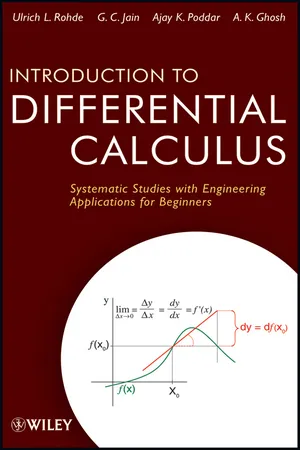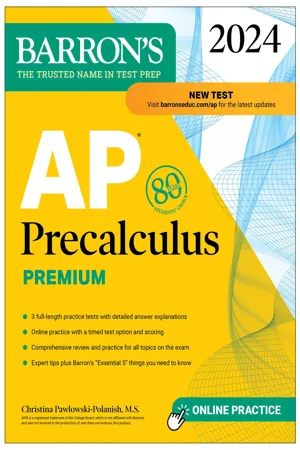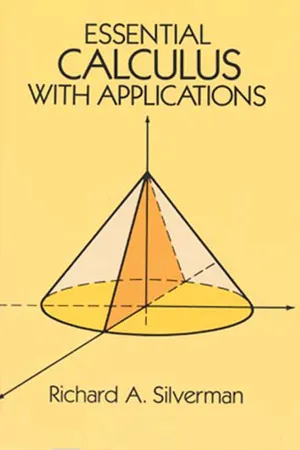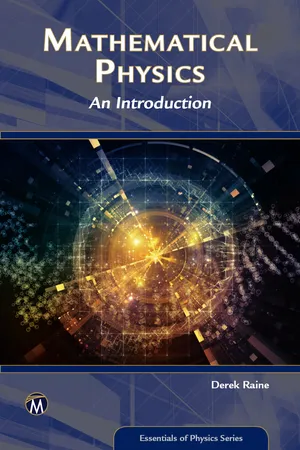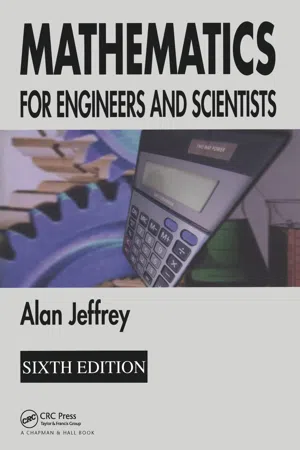Mathematics
Integration of Logarithmic Functions
The integration of logarithmic functions involves finding the antiderivative of functions involving logarithms. This process often requires using techniques such as substitution or integration by parts. The resulting integral may involve logarithmic terms and can be used to solve various mathematical problems, particularly in calculus and mathematical modeling.
Written by Perlego with AI-assistance
Related key terms
7 Key excerpts on "Integration of Logarithmic Functions"
- Gautam Bandyopadhyay(Author)
- 2023(Publication Date)
- CRC Press(Publisher)
Main impetus in this regard came from astronomy where it was frequently necessary to multiply and divide large numbers. However, logarithm can be perceived from many other angles. It can be viewed as the area under the rectangular hyperbola y = 1 x in geometry. It can be used as the inverse of exponential function e x or a x. As such we may treat it as the inverse of continuous compounding problem when we are interested to know in how many years Rs. 1/- will have a matured value e x or a x. In analysis we find that it is the limit of the product of two factors which are functions of n when n tends to infinity. It can also be expressed as an infinite series. It is one of the core functions in mathematics extended to negative and complex numbers. It plays vital roles in many branches of mathematics. Mathematical expressions for inductance and capacitance of a transmission line contain logarithmic terms. Logarithm forms the basis of Richter scale and measure of pH. It has wide applications in many other fields as well. 3.2 Logarithm as artificial numbers facilitating computation “Logarithms are a set of artificial numbers invented and formed into tables for the purpose of facilitating arithmetical computations. They are adapted to the natural numbers in such a manner that by their aid Addition supplies the place of Multiplication, Subtraction to that of Division, Multiplication that of Involution, and Division that of Evolution or the Extraction of Roots”. Excerpt from A Manual of Logarithms and Practical Mathematics for the use of students, Engineers, Navigators and Surveyors — by James Trotter of Edinburgh Published by Oliver & Boyd, Tweeddale Court and Simpkin, Marshall, & Co. London in 1841. In eleventh century Ibon Jonuis, an Arab mathematician proposed a method of multiplication which can save computational labour significantly. The method is known as Prosthaphaeresis. The Greek word prosthesis means addition and aphaeresis means subtraction- eBook - ePub
- Seymour B. Elk(Author)
- 2016(Publication Date)
- Bentham Science Publishers(Publisher)
Fig. (6.1)-1). y = and associated integral with this functionNote that regions (b) and (c) are congruent to each other and, as will be shown below, have infinite area. Additionally, the limiting value for x in region (b) is infinitely large, while the limiting value for y is “infinitely” small (also designated as “infinitesimal”; i.e., approaches 0). Similarly, the reverse is true in region (c), where y will get infinitely large as x gets infinitesimal.Focusing now on region (b), the area between this curve and the two coordinate axes may be written as the definite integral: and that part of this area bounded by the vertical line with coordinate x: . This integral is the definition of a special function that will be designated as the “natural logarithm”: Even though x is a typical argument of a traditional function, by convention, parentheses are not needed nor are they usually included for a single term. On the other hand, because of the method of definition of this function; viz., being defined only for a real variable x > 1, in the traditional presentation of calculus, absolute values are included whenever the argument of the function is not limited to being always positive. In other words, one usually includes absolute value signs when writing ln | x | and ln | x2 −1 |, but not for ln (x2 +1), inasmuch as one wants the integrand to always be positive.DEFINITION: loge x (abbreviated as: ln x)From this definition, one readily observes that the derivative of the logarithmic function is the derivative of an integral. Moreover, these two operations (differentiation and integration) are inverse operations. Consequently, when they are performed sequentially, one regenerates the other. In particular: = .At this point the important observation is made that such a procedure has not taken the limits of integration into account. To do so, note that all of the previous integrals had been evaluated between constant limits and that the derivative of every constant = 0. On the other hand, for this above integral, despite that the lower limit is a constant (namely 1) with the just noted derivative of that constant being 0; the upper limit is NOT a constant, rather it is x and the derivative of x with respect to x - eBook - ePub
Introduction to Differential Calculus
Systematic Studies with Engineering Applications for Beginners
- Ulrich L. Rohde, G. C. Jain, Ajay K. Poddar, A. K. Ghosh(Authors)
- 2012(Publication Date)
- Wiley(Publisher)
Chapter 13a Exponential and Logarithmic Functions and Their Derivatives 13a.1 IntroductionExponential and logarithmic functions are among the most important and most practically useful functions in calculus. The definition of logarithm of any (positive) number is based on exponents and the properties of logarithms are then proved from corresponding properties of exponents.1If a > 0 (a ≠ 1), then the expression a x makes sense for any real number x . Accordingly, for any positive base a (except a = 1), the expression a x defines a sensible exponential function. In practice, a = 2, a = 10, and a = e are the most useful bases. Among all exponential functions, the one with base e (i.e., the function ex ) turns out to be especially useful and convenient. For day-to-day calculations such as those in the field of engineering, the base 10 is found to be very useful. Logarithms to the base 10 are called common logarithms . Important in calculus are logarithms to the base e called natural logarithms .(2)In many books, systematic and excellent information about the number e is available. It possesses certain unique properties valuable in many branches of mathematics, particularly calculus . For a student of mathematics, the knowledge of this unique number (and the related functions: ex , a x , ) is very essential. We give here a brief account of the number e. Its approximate value is given byFor this number, the symbol e was first adopted by the great Swiss mathematician Leonard Euler.What must you know to learn calculus? 13a-The number “e,” its origin, value, and properties Exponential and logarithmic functions (ex , loge x, ax , loga x ), their derivatives and the applications of ex (exponential growth and decay)13a.2 Origin of eThe idea of the number e comes from the practice of money lending. Consider a quantity growing in such a way that the increment of its growth, during a given time, shall always be proportional to its own magnitude. This situation resembles the process of computing interest on money lent at some fixed rate, since the bigger the capital, the bigger the amount of interest. Here, we must distinguish clearly between two ways for calculating interest on the capital: (a) at simple interest, and (b) at compound interest. - Christina Pawlowski-Polanish(Author)
- 2023(Publication Date)
- Barrons Educational Services(Publisher)
x = 0, with an end behavior that is unbounded. That is, for a logarithmic function in general form,Since a logarithm is an exponent, the laws for evaluating logarithms follow the laws of exponents listed in Section 5.2. Logarithms of products, quotients, powers, and roots7.4 Logarithmic Function Manipulationcan be broken down into their component parts by using one or more of the logarithm laws outlined in Table 7.6 .Table 7.6 Logarithm LawsExampleExpress in terms of log5 x and log5 y.SolutionFirst use the power law: Then use the quotient law: Therefore:ExampleIf log 2 = x and log 3 = y, express each of the following in terms of x and y.1.2.log 24 3.log 1.5SolutionFor each of the examples, rewrite the numbers as factors of 2 and 3 and then use the logarithm laws.1.2.3.Each of these logarithm laws has a different graphical implication. These graphic properties are outlined in Table 7.7 .Table 7.7 Logarithm Graphical TransformationsExampleDescribe the transformation of each of the following functions from its parent function.1.f(x) = log2 2x2.g(x) = log3 x23.h(x) = log5 x4.SolutionFor each of the functions, use the logarithmic laws to rewrite each function as a form of the parent function y = a logbx. Then use the differences to describe the transformations.1.f(x) = log2 2x = log2 2 + log2 x = 1 + log2 xWhen written in this form, f(x) is a vertical translation 1 unit up of the graph of the functiony = log2 x.2.g(x) = log3 x2 = 2 log3 xWhen written in this form, g(x) is a vertical dilation of the function y = log3 x by a factor of 2.3.When written in this form, h(x) is a vertical dilation of the function y = log5 x by a factor of- eBook - ePub
- Richard A. Silverman(Author)
- 2013(Publication Date)
- Dover Publications(Publisher)
xa. We now introduce the function loga x , where x is any positive number and a is positive but different from 1. This function, called the logarithm to the base a , is defined by the formulaand has properties very similar to those of the function ln x , to which it reduces for a = e . For example, it follows at once from (12) thatwith the help of (2) , (4) and (7) . For a = 10, we get the common logarithm log10 x of elementary mathematics, usually denoted by log x without the subscript 10.b. If a and b are two positive numbers different from 1, thenso thatSetting x = a in (13) , we find that1 = loga b · logb a ,or equivalentlyIn particular, choosing b = e in (14) , we getc. The derivative of the function loga x is easily calculated. In fact,with the help of (15) .PROBLEMS1. Why can’t the integral defining ln x be evaluated by using formula (15) , p. 150 ?2 .Are the functions ln (x 2 ) and 2 ln x identical?3 .Find the domain of(a) ;(b)ln (ln x );(c) ln (ln (ln (ln x ))).4 .Differentiate(a)ln (x 3 − 2x + 5);(b)x ln x ;(c)(ln x )3 ;(d)ln (ln x ).5 .Differentiate6 .According to the mean value theorem (Sec. 3.43a ),f (2) − f (1) = f ′(c ),where 1 < c < 2. Find c if f (x ) = ln x .7. Show that the tangent to the curve y = ln x at the point e goes through the origin.8 .What is the fourth derivative of the function y = x 2 ln x ?9. Verify that∫ ln x dx = x ln x − x + C .10 .Find the area of the region bounded by the x -axis, the line x = e and the curve y = ln x .11. In which intervals is the function x 2 − ln (x 2 ) increasing? Decreasing?12 .Where does the function x − ln x - eBook - ePub
Mathematical Physics
An Introduction
- Derek Raine(Author)
- 2018(Publication Date)
- Mercury Learning and Information(Publisher)
x ). Then,We can show this must be true by differentiating the right hand side using the chain rule. If we let f (x ) = u, thenIntegration of functions like this – which can be written as a fraction where the numerator is the derivative of the denominator – is often called logarithmic integration.Exercise 1.18 Show that .(Remember that to prove a given integral you differentiate the anti-derivative.)1.11.INTEGRATION BY SUBSTITUTION
It is often possible and useful to make a substitution that turns a complicated integral into a simpler integral or a “standard” integral that is given in charts like Table 1.2 . Knowing which substitution to use comes with experience and trial and error (and also guesswork!).Example 1.16 By using a suitable substitution calculateFirst, we look for an explicit change of variable such thatWe can then evaluate the integral, ∫ dt/t , using a standard result from Table 1.2 .As we want to manipulate the integral into a form where the new denominator involves t instead of ax + b , we start by trying t = ax + b . Then dt = adx so dx = dt/a. Next we substitute for x and dx to giveFinally, from the standard integral in Table 1.2 , ∫dt/t = ln(t ), sothatExample 1.17 Find an explicit change of variable such thatwhere K is a constant.We want to replace the a 2 with a 1 in the denominator, so we take out factor a 2 to getWe now want t 2 for x 2 /a 2 so we try t = x/a, and dt = dx/a or dx = a dt. ThenExercise 1.19(i) Find an explicit change of variable that converts (ii) Similarly, simplify In harder questions where we are not given the answer, the best approach is often to try to make the integrand as simple as possible. There is usually more than one way to start and, if you do not succeed the first time, try again!Example 1.18 Find .It is tempting to try t 2 = 1 − x 2 to get rid of the square root. Then, by differentiation 2tdt = −2xdx and therefore dx = − tdt/ (1 − t 2 )1/2 . SoThis is back where we started – so the substitution t 2 - eBook - ePub
- Alan Jeffrey(Author)
- 2004(Publication Date)
- Chapman and Hall/CRC(Publisher)
The process is called logarithmic differentiation, though it should more properly be called differentiation by means of the logarithmic function. It is best illustrated by example. Suppose we need to find d y/ d x, where y = f (x) g (x) h (x). Taking natural logarithms and using their properties gives ln y = ln f (x) − ln g (x) − ln h (x). Differentiation with respect to x then. gives 1 y d y d x = f ′ (x) f (x) − g ′ (x) g (x) − h ′ (x) h (x), which when multiplied by y gives d y/ d x. The simplification arises from the fact that in general the expression for (1 /y) (d y /d x) is easier to calculate than d y /d x. Example 6.7 Find d y/ d x by means of logarithmic differentiation. if y = (2 x − 7) 5 (3 x + 1) 1 / 2 (2 x − 1) 3 / 2. Solution Taking the natural logarithm gives ln y = 5 ln (2 x − 7) − 1 2 ln (3 x + 1) − 3 2 ln (2 x − 1). Differentiating with respect to x we. find 1 y d y d x = 10 2 x − 7 − 3 2 (3 x + 1) − 3 2 x − 1, which after multiplication by y and simplification becomes d y d x = (72 x 2 + 142 x + 1) (2 x − 7) 4 2 (3 x + 1) 3 / 2 (2 x − 1) 5 / 2. 6.4 Hyperbolic functions It is useful to define new functions called the hyperbolic. sine, written sinhx and pronounced either as ‘cinch x’ or ‘shine x ’, and the hyperbolic cosine, written cosh x and pronounced ‘kosh x ’, which are related to the exponential function. This is achieved as follows. Definition 6.3 For all real x we defme sinh x and cosh x by the requirement that (hyperbolic functions) sinh x = e x − e − x 2, cosh x = e x + e − x 2. It is an immediate consequence of combining the series for. e x and e − x that sinh x = x + x 3 3 ! + x 5 5 ! + x 7 7 ! + … + x 2 n + 1 (2 n + 1) ! + … = ∑ n = 0 ∞ x 2 n + 1 (2 n + 1) !, (6.23) and cosh x = 1 + x 2 2 ! + x 4 4 ! + x 6 6[--=PLGO-SEPARATOR
Learn about this page
Index pages curate the most relevant extracts from our library of academic textbooks. They’ve been created using an in-house natural language model (NLM), each adding context and meaning to key research topics.


